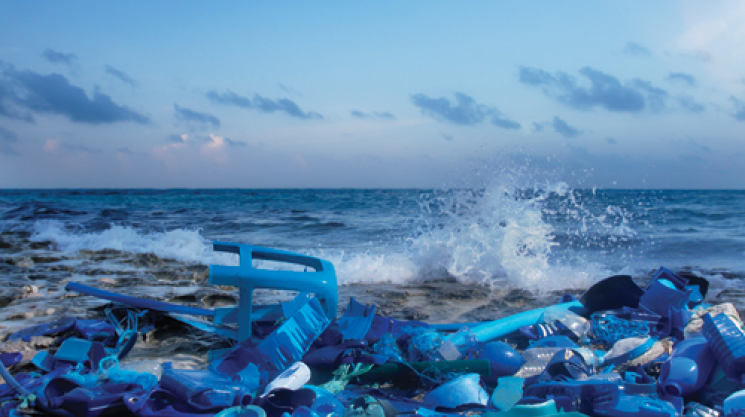
Wed, 11/02/2011 - 20:20 by AltaGrade
Earth, Air, Fire, Water, Heart, yes I am talking about Captain Planet. Many people associate environmentalism with gloom-and-doom predictions about the planet and how we are failing it. Art can be created from many recycled materials and found objects. Recycling in art is not a new trend. Used canvases, for instance, were commonly painted over to create new works of art in the past, however, the modern phenomenon of creating art from recycled materials goes a lot further. Since climate change is a serious issue, many artists, architects and other designers are working on small and large scale green projects that both consider the effect of artistic materials on the environment and help spark discussion on this issue. While the direct impact of a given artwork or design may be small, the cumulative result of multiple efforts in “green art” is visible and grows bigger with every creative and sustainable art project or design.
Washed Up is an ongoing project by Mexican-born, New York-based artist Alejandro Durán. The project began in February of 2010 and proceeded with Durán making several trips to the UNESCO World Heritage site; Sian Ka’an. This coast is home to a ton of plant life as well as the world’s second largest coastal barrier reef. Regrettably, Sian Ka’an is also a depository for much of the world’s garbage, carried there by ocean currents from every corner of the globe. Durán has created several color-based, site-specific sculptures on these banks demonstrating this clash between the hands of mother-nature and Man’s mess. He then photographs these sculptures, echoing the organic forms of the surrounding landscape.
This stunning project and photo series addresses the issue of plastic pollution that’s making its way across the ocean where it inevitably washes onto the shores of Sian Ka’an, Mexico’s largest federally-protected reserve. Throughout his work Durán has identified products washed ashore from forty-two nations on six continents. The resulting photo series shows how even undeveloped land is not safe from the far-reaching impact of our disposable culture. This isn’t just about an artist turning trash into treasure. Washed Up speaks to the environmental concerns of our time and its vast quantity of discarded materials.
The new world of “garbage art” exemplifies that creativity which still blooms in every aspect of human life. In fact, often the best facilities do not nurture creativity and ideas, but rather it is the scarcity of things that gives birth to new ideas and art. Art from recycled materials and found objects is a great alternative to mass produced art. Each piece is likely to be truly individual and one of a kind. But for a very long time, the idea of recycled art did seem to be challenged in the results department. I remember attending a recycled art show, and really feeling like gluing junk to other junk which still resulted in junk – with glue!
Maybe it’s sense of humor or a perhaps a slightly twisted mind, but “garbage artists” are able to take everyday objects that are broken or discarded and mold them into a visual assault. Scrap metal, wire, old toys or bottle caps become the stuff of which these fascinating dreams/nightmares are made. One project took advantage of the mass produced enviro hazard: The Empty Water Bottle. A truly unique idea is on display in North Evanston, Illinois. The work is formed from 6000 recycled plastic bottles tipped over on a large grass field to construct five 16-foot giant bottles. Guests to the exhibit are asked to slip messages inside the small bottles for other guests to read. This project is not only an interesting community project but interactive as well.
Sometimes artwork can be done purely for the joy of it, with no method or meaning. Scrap metal parts and pieces are often a favorite industrial art medium. Although immobile, these whimsical pieces seem to have personalities that pop.
If you have ever been to the art store to buy materials, then it is clear that they don’t come cheap. People like to accumulate a lot of stuff. Some of this stuff we need, and some of it we do not. The things and stuff we do not want, need or require, accumulate. Garbage bins, dumpsters and landfills are all filling up, when there are other things that can be done with those materials we are quick to throw away.
While many “garbage artists” use trash to create their artworks for simple aesthetic purpose, or value, some artists use found materials to make direct statements about the nature of waste in our society while others employ recycled materials simply to get us to think about ordinary objects in a new and different way.
Durán’s project and a full collection of photos can be seen at www.washed-up-project.com
Words: Patrick Kriz




Add comment